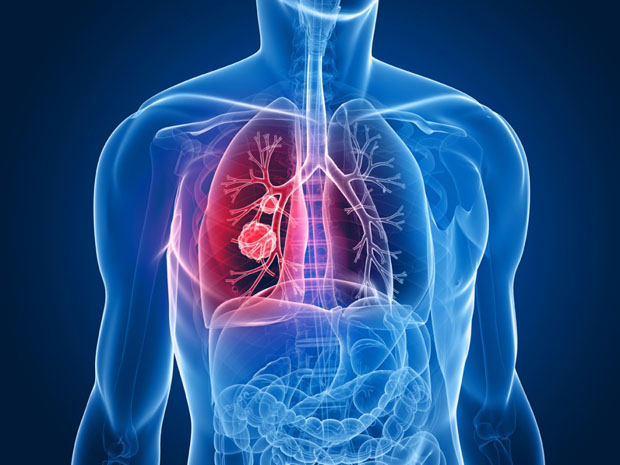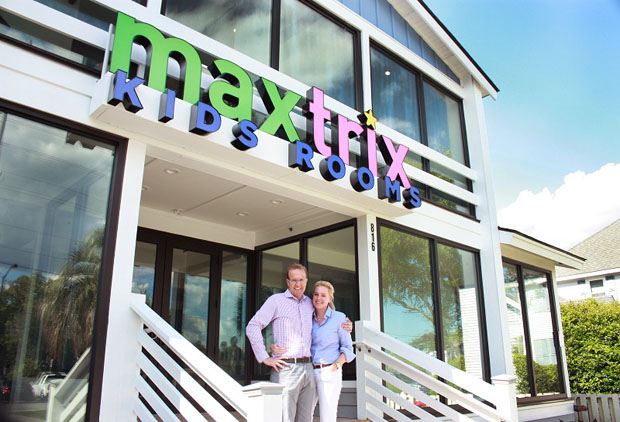Number One Killer
29 Aug 2016
Lung cancer continues to win the battle with smokers―Message from Doctors: Quit
By SYBIL FIX

In his work as pulmonologist at the Hollings Cancer Center at the Medical University of South Carolina, Dr. Gerard Silvestri sees between four and six new lung cancer patients a week. In varying stages of disease, many if not most of them will die of this illness that, when all is said and done, continues to be the number one killer among cancers.
Silvestri, who is vice-chair of medicine at MUSC and who holds the endowed Hillenbrand Professorship in thoracic oncology, rattles the figures off methodically: Lung cancer kills more people than breast, colon, and prostate cancers combined (which are next in line in the rankings of numbers of deaths caused); and, perhaps even more staggering, it kills more women than all other female cancers combined. Though breast cancer dominates the public’s attention, he said, “It’s very important to recognize the epidemic of lung cancer in women... It’s a real killer.”
The figures are cold, but nothing about this is cold—for Silvestri or others in the business. And having lost a parent to cancer at a young age gives Silvestri an intimately personal and compassionate perspective.
“Some days it can really weigh on your soul,” he said. “That’s why we continue to do research, try to get folks to quit smoking and to promote good health habits along the way.”
As a doctor, he said, “you have to really relish the successes.”
On the eve of yet another cancer awareness month, Silvestri, who is internationally recognized for his work, draws the bottom line with both good news and bad. The bad news is that while cigarette smoking, which causes between 85 percent and 90 percent of all lung cancers, is down to unprecedented low rates in the United States, it remains a preferred habit among the poor and poorly educated and also among young girls of high school and college age. Once you smoke, doctors agree, you can never quite go back to the baseline.
The good news is that, thankfully, science continues to make headway.
Among the most revolutionary developments in lung cancer work are early detection, low-dose spiral CT lung screening programs such as the one MUSC began over the past year (Trident Medical Center and Roper Hospital also offer them). Given the structure and functioning of the lung, which makes lung cancer largely asymptomatic until it is advanced beyond the stage of successful treatment, the importance of early detection screenings is hard to overstate.
The screenings, which are covered by Medicare and Medicaid, have strict eligibility criteria: Patients must be between 55 and 80 years of age, have smoked 30 pack-years (at least a pack a day for 30 years, or two packs for 15 years, and so forth), and must be a current smoker or have quit within the past 15 years.
Silvestri, whose work has focused largely on the evaluation and management of screen-detected abnormalities, and the diagnosis and staging of lung cancer through new technologies, said screenings are reducing lung cancer mortality by as much as 20 percent, nationally and locally. Every week screenings are identifying people with lung cancer, some in the early stages, and in combination with treatments, surgery and quitting smoking they will prevent people from dying from the disease.
The early detection of lung cancer allows for a greater array of treatments, among them more successful surgeries and more effective radiation therapy, whose usefulness is limited or nil if the cancer has metastasized. In cases of limited nodules, radiation exists now that is so precise as to be non-destructive to surrounding structures, said Dr. Todd Williams, a radiation oncologist with Trident Health. He said radiation can decrease mortality by as much as 90 percent in Stage I lung cancers.
“Very precise techniques enable high doses and we can miss things we want to miss,” Williams said.
Surgery, also an essential tool in cancers that are detected early, has become less invasive and more precise, yielding better results and less collateral damage to the body. Together with targeted radiation and medications, he said, “we are seeing incremental improvements all the time.”
Another significant development in lung cancer treatment, as in other forms of cancer, is the move away from the “kitchen sink” approach toward the advancement of more personal, targeted approaches designed for specific types of cancer cells, their markers and their pathways. In that regard, breakthroughs in genomic as well as new treatments such as immunotherapy, which helps the body’s immune system fight and reverse the cancer cells’ debilitating moves, are portending successful targeted personalized therapies as well as more promising results than combinations of other treatments―particularly chemotherapy, which sets out to kill the cancer cells and whose current failure seems downright discouraging.
While new drugs are helping patients better manage the side-effects of chemotherapy, Silvestri said, “The disease comes back a lot”: Right now, only 17 percent of all lung cancer patients, with cancer at any stage, have survival rates of more than 5 years (with 5 years considered cured).
“It’s very low. It’s terrible, and it’s obviously not working,” Silvestri said.
Newly approved immunotherapy drugs and new clinical trials of other immunotherapy drugs, both nationally and at MUSC, are showing positive responses in as many as a third of patients. Silvestri is buoyed by this. He believes that continued work in the field — together with the continued enrollment of more patients in clinical trials and an interdisciplinary approach to the disease — will transform lung cancer from lethal to chronic.
“I have never been more optimistic,” he said. “We are seeing with some of our patients a new era in the treatment of lung cancer... I believe that eventually traditional chemotherapy will fall by the wayside.”
He encourages patients with lung cancer to enroll in clinical trials of new therapies. “None of these cancers are going to be cured without people participating in trials,” Silvestri said. “Enrolling in clinical trials is worth doing, and for us to make continued headway, we need to do much better with that.”
Asked whether more people — people who are younger or people who have smoked for fewer years and who quit a longer time ago — would not benefit from the lung screenings. Silvestri said evidence does not indicate significant reductions in mortality rates for those people, while at the same time forcing them to undergo an ever larger number of diagnostic tests to probe spots or other things the screenings may show. MUSC, under Silvestri’s leadership, participated in the National Lung Screening Trials of the National Cancer Institute, which screened more than 50,000 people over five years and whose results directed the designation of the criteria and the launch of insurance-funded screening programs nationwide. The average lung cancer onset is at 70, and it remains, for the most part, a disease of an older population. And, age aside, the greatest impact on mortality continues to come from how long one has been without smoking.
“Screenings work, but quitting smoking is even better ... The most important thing you can do is to quit smoking,” said Silvestri, who is also this year’s president of the American College of Chest Physicians. People who are diagnosed with cancer should quit, and people who have family members with lung cancer should quit, he said.
MUSC is so committed to helping people quit smoking that people who are inpatients at the Hollings Cancer Center or any other MUSC hospital for any health reason, and who are smokers, are referred to MUSC’s new Tobacco Treatment Program, its first targeted effort toward smokers, which offers a combination of counseling and medical treatment and has thus far intervened in hundreds and hundreds of lives.
“It does not matter what the ailment is, if you are a smoker and you are here we have made it our business to come by and talk with you,” said Dr. Benjamin Toll, a clinical psychologist who is clinical director of the smoking cessation program and co-director of the lung screening program. People who go through the lung screening program also are referred to smoking cessation.
The tobacco program is promising: About 50 percent of enrolled patients quit smoking during active therapy, Toll said, and about a third of the total are still off cigarettes a year later.
His message to smokers, he said, “is that they should get help. There is hope. They should attempt to quit.”
Overall, taking an overview of a 25-year career in lung cancer care, Silvestri is encouraged.
“For the first time in my career I see a light at the end of the tunnel,” he said.
“Now,” he added after a moment, “if only we could get people to not smoke, that would be great.”
For smoking cessation information Toll recommends calling 1-800-QUITNOW. Family practitioners are also able to offer referrals for smoking cessation programs and medications. A combination of counseling and medication is proven to be most effective. The MUSC program, while geared for MUSC patients, accepts referrals for others who are committed to quitting.











